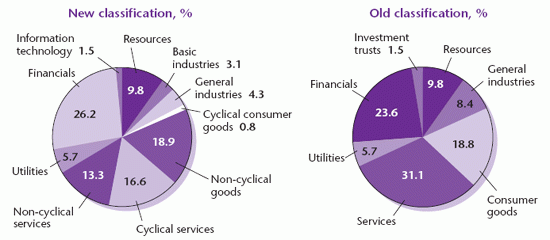Limited companies
Incorporation gives a limited company a separate legal existence from its owners (shareholders). There are over 1 million limited companies registered in the UK, varying in size from small family-owned businesses to large PLCs.
Private and public companies
A limited company is classed as private (Ltd) unless its memorandum of association states that it is a public limited company (PLC). A private company cannot advertise its shares for sale to the public or through the Stock Exchange: its share capital must not exceed £50,000.
PLCs must have a minimum £50,000 share capital, and can sell their shares to the public and may be quoted on the Stock Exchange. A Stock Exchange acts as the market for second-hand stocks and shares (securities). It therefore encourages investment in business, offering investors a degree of protection through its strict rules for admitting firms.
The Alternative Investment Market (AIM) exists for companies that are too small (or young) to be quoted on the London Stock Exchange. The Stock Exchange in London is one of the largest in the world.
In 1999, changes were made to how the London Stock Exchange classifies shares. These changes reflected the increasing importance of ‘information technology’ companies, anticipated the expected effects of Europe’s single currency, and helped investors to invest in shares less affected by economic recession (by dividing stock into ‘cyclical’ and ‘non-cyclical’ categories).

KEY POINT: PLCs find it easier to raise finance, tend to be much larger than private companies, and find ownership and control more clearly separated.
The comparison with sole traders and partnerships
- Limited liability is offered to investors, encouraging greater investment.
- Greater investment = greater size = greater economies of scale.
- Through its separate legal existence from the owners, the company owns assets, takes legal action in its own name, and does not face problems of continuity when an owner dies, retires or otherwise leaves.
but
- Greater expense and more formalities are incurred in setting up the company.
- Its business affairs are less private.
- Greater size may result in diseconomies of scale.
- Owners of private companies may face difficulties in selling shares.
- Ownership of PLCs can be transferred (via the Stock Exchange) against the wishes of the directors, and shareholders may seek to operate short-term policies to make short-term profits, all leading to greater instability.
Registering a company
The Companies Act 1985 sets out the legal requirements to create and run a company. All companies are registered at the Companies Registration Office. Limited companies must submit annual returns summarising changes to their affairs, and annual financial statements, including the directors’ report, profit and loss account and balance sheet, and the auditors’ report.
The Memorandum of Association governs the relationship of the company with the outside world. Its clauses include:
- Name - The proposed company name
- Situation - The address of the registered office
- Objects - The purposes for which it was formed (stated in general terms)
- Liability - A statement that its members have limited liability
- Capital - The amount of capital registered and the types of shares
- Association - Directors’ names and addresses
The Articles of Association govern the internal workings of the company, including details of directors (number, rights and duties), the conduct and calling of meetings, and the division of profits.
‘Divorce of ownership and control’
This phrase is closely associated with PLCs: shareholders own the company but do not control it. Few shareholders have a direct say in the daily running of the PLC, because – through the Annual General Meeting (AGM) – they appoint specialist directors to exercise effective day-to-day control on their behalf.
Once ownership and control is separated in this way, the decisions made by the directors – the controllers – may clash with the wishes of (some of) the shareholders – the owners. A common example is where the shareholders may wish to see a policy of profit maximisation, which may not be the wish of directors who see long-term growth as a more important strategy to pursue.
